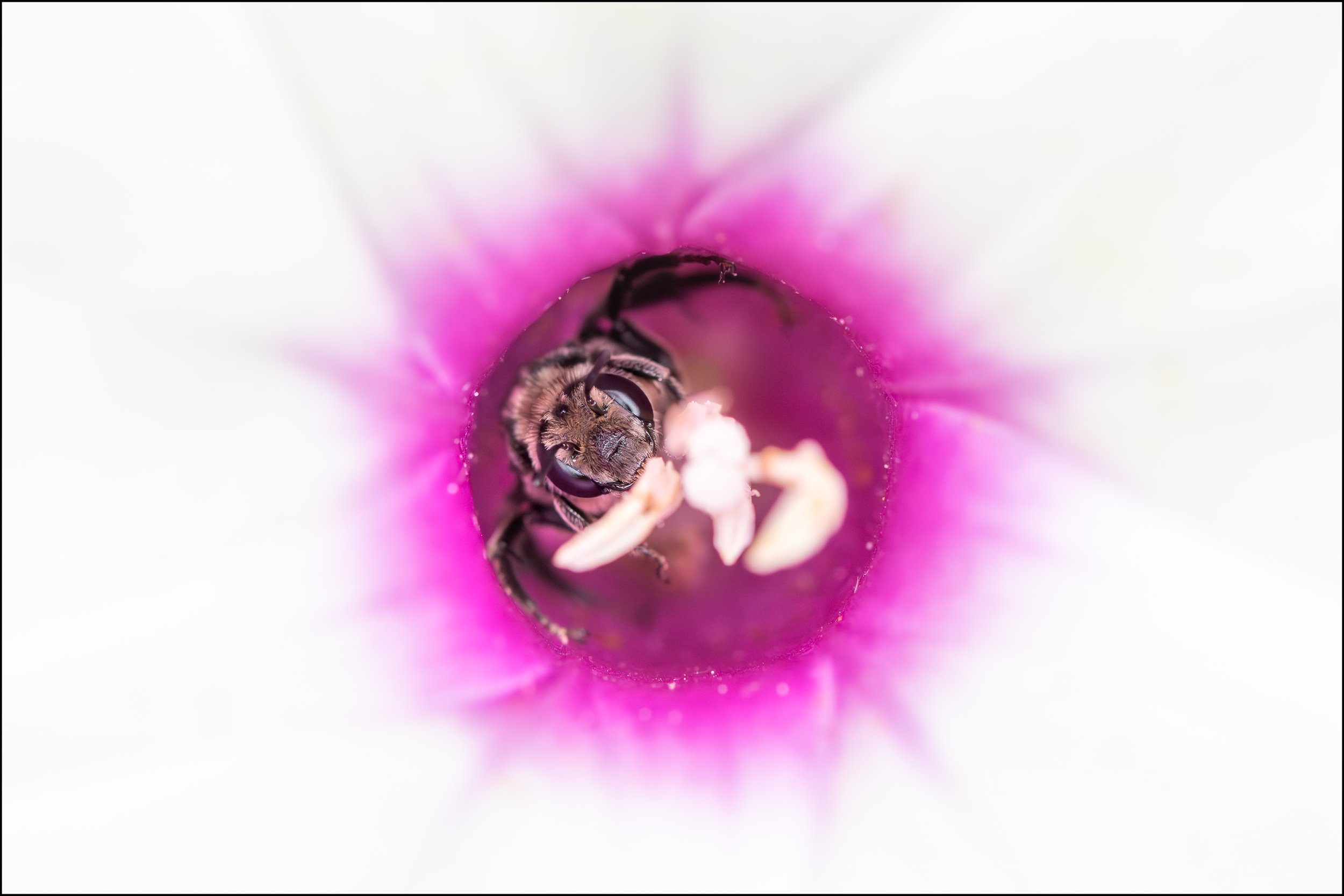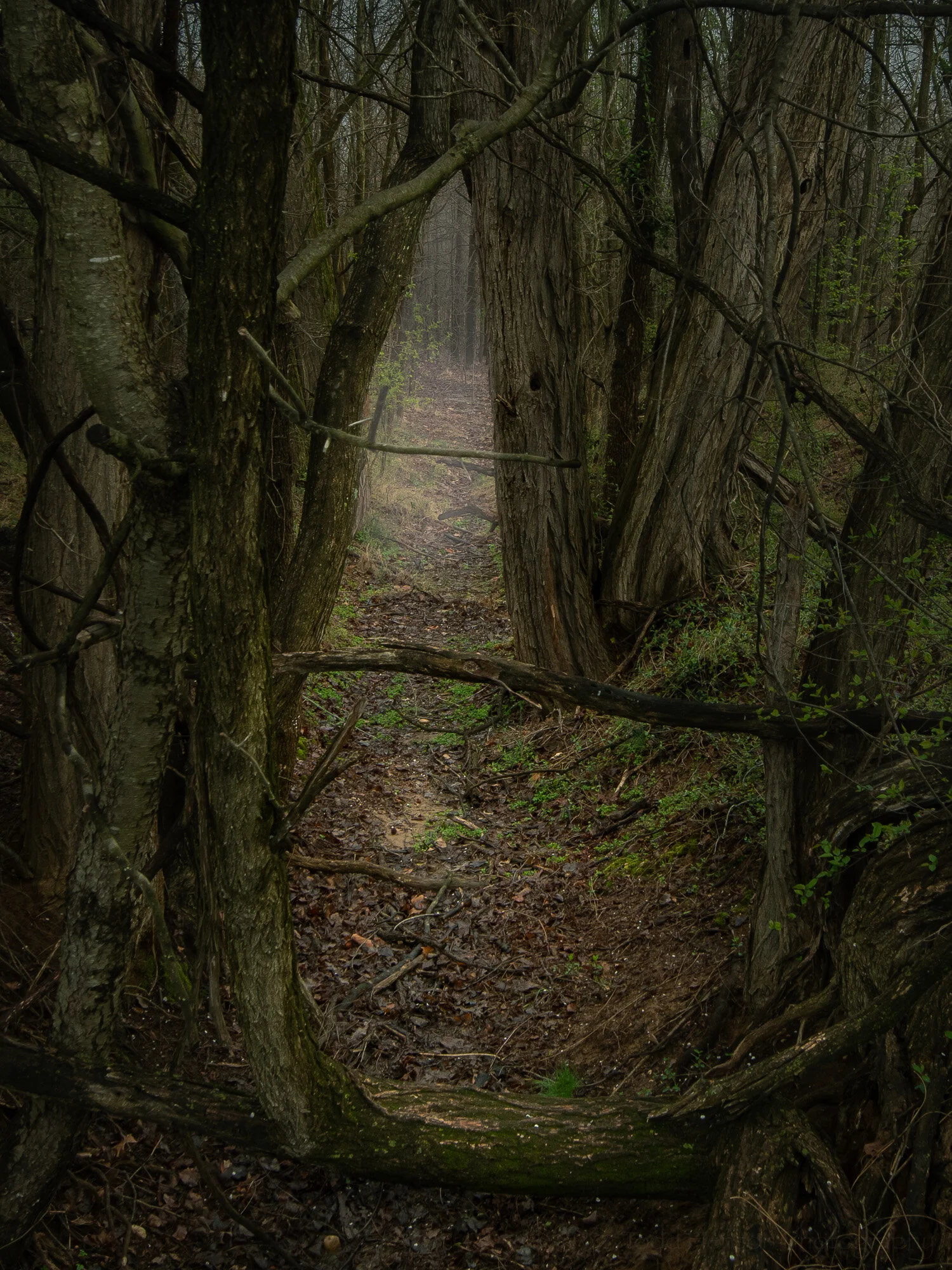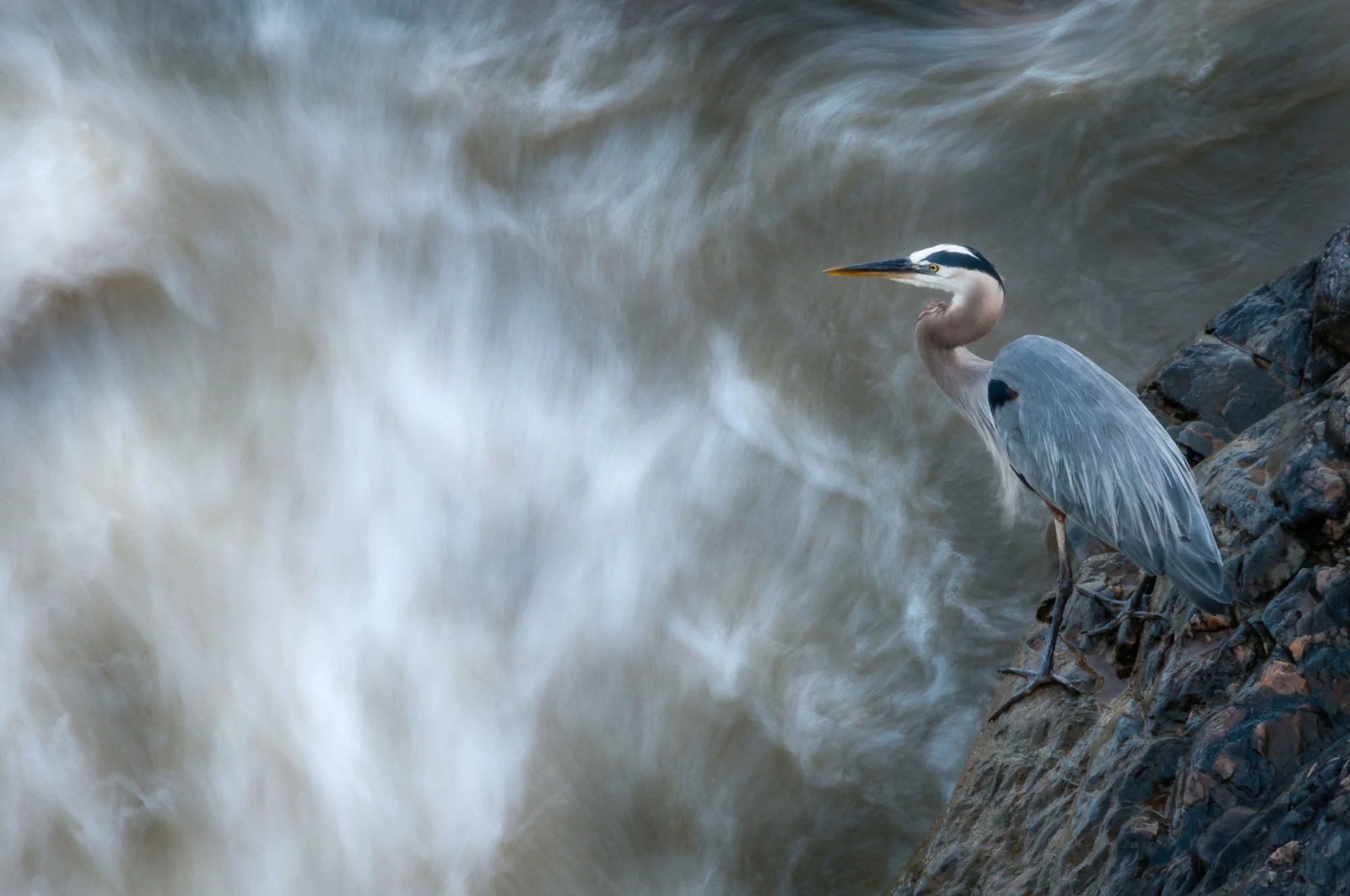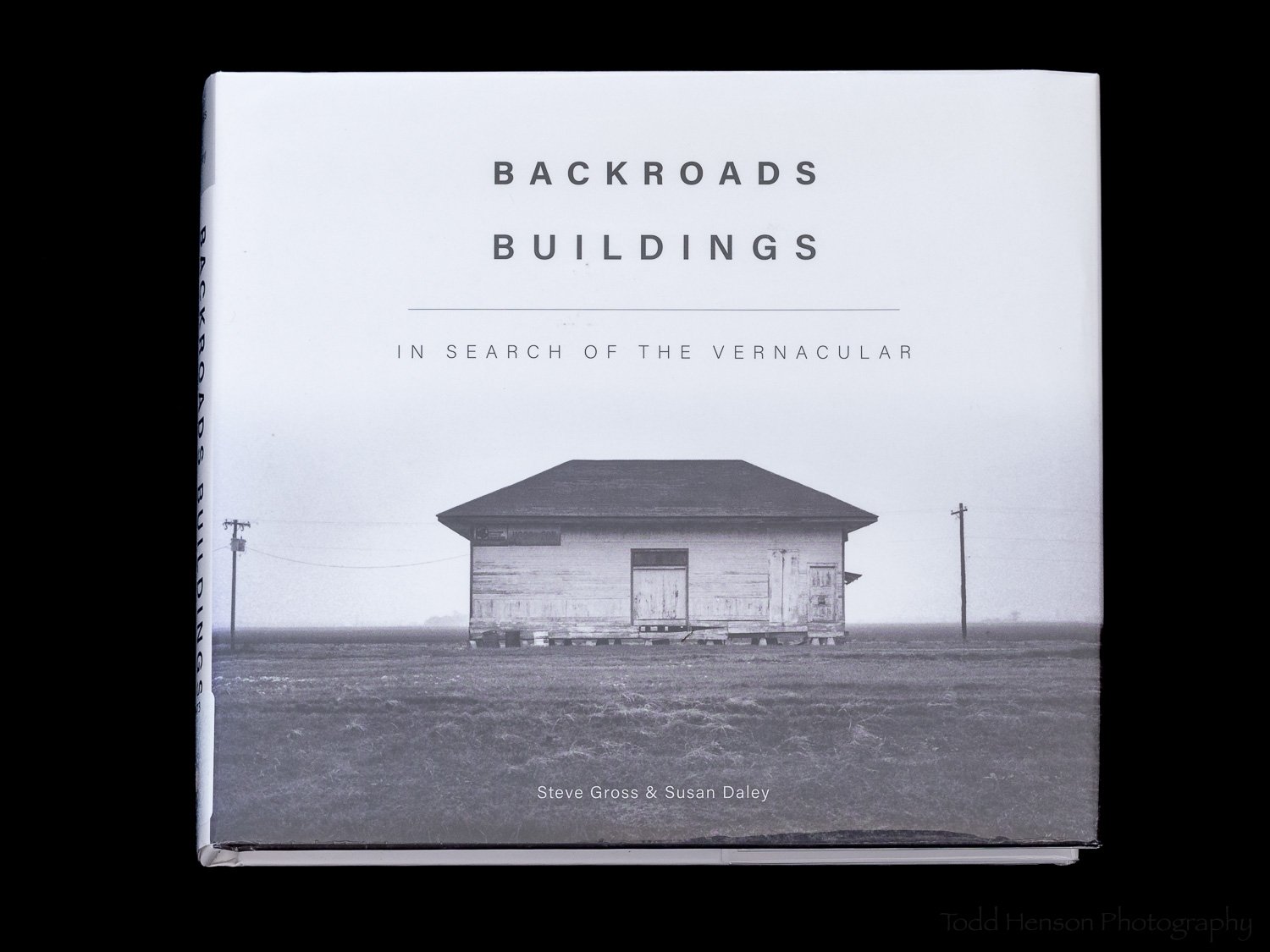Angular Flow No. 2
The Story
Angular Flow No. 2 is a photograph of water flowing over a dam above Great Falls on the Potomac River, between Maryland and Virginia. This photograph was created on the Virginia side of the river. A previous image, Angular Flow No. 1, was created on the Maryland side. As with the previous photograph, I had been photographing the falls and some of the various birds that congregate along the river.
At one point I ended up at the dam upriver from the falls. For the previous photograph I was standing upriver from the dam looking downriver. For this photograph I was standing just downriver from the dam looking upriver.
As before, I loved the patterns and tones created by the flowing water as it flowed over the dam. And I wanted to capture the interesting forms created by the churned up water below the dam, so I knew I needed a fast shutter speed.
The Technique
To get a fast shutter speed I just needed to open up the aperture of my lens, which lets in more light allowing the sensor to get a proper exposure in less time. As a side effect this also reduces the depth of field, but I chose such a small portion of the dam, and this was intended to be an abstract image, so the shallow depth of field wasn’t a great concern. You can see the water closest to and furthest from the camera is slightly out of focus due to the large aperture.
Using an aperture of f/5.6 and raising my ISO to 800 let me use a fast shutter speed of 1/2500 second, freezing the foaming water below the dam and letting us see some of the interesting patterns.
The Processing
Below is the raw image before I made any adjustments in Adobe Lightroom. It is a color image, but there isn’t much color and it didn’t contribute anything to the photograph so I knew I would convert to black and white.
The original raw image for Angular Flow No. 2
The exposure was a little darker than I would have preferred so I raised the exposure in Lightroom, lightening up the water. I also brightened the whites and darkened the blacks to add a little more contrast. And finally, I converted the image to black and white and adjusted each color channel to balance the tones. In this case there wasn’t much color in the image so I didn’t tweak much.
Angular Flow No. 2 - The final version in black and white
What do you think, would you have done anything differently? Let me know in the comments below.
Do you enjoy these posts?
Sign up to receive periodic emails with updates and thoughts. Don’t worry, I won’t spam you. And please consider purchasing artwork or products from my online store, and using my affiliate links in the sidebar to the right when shopping online.
I appreciate your support!





























































